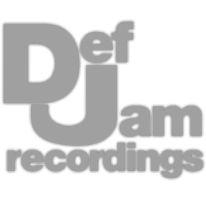Professional Analog Mastering.
Professional Analog Mastering.










1. What Creates Vocal Clarity?
2. Start with a Simple EQ
3. Upward and Downward Compress
4. Saturate High Mids
5. Parallel Compress Highs
6. 2 to 3kHz Reverb
7. 2 to 3kHz Delay
8. Sidechain Compress Instrumental
9. Carve Out Room for Vocals
Before we begin let’s understand what causes vocal clarity - in short, it’s about the relationship between low and high frequencies, specifically roughly 1.5kHz to 4kHz as they relate to about 150Hz to 250Hz. Although both groups of frequencies are needed, clarity comes from having the right balance between the 2.
Additionally, vocal clarity comes from the relationship between the vocal’s perceived loudness and the instrumental's. If the instrumental overpowers the vocal, it’ll lose a sense of clarity.
Let’s listen to the mix we're working on today.
Let’s start our vocal with a very simple EQ - we’ll listen to the low-frequency range we discussed, and the high, and find a better balance between them. We’ll boost some highs and cut some lows - we may also want to attenuate 700Hz to reduce nasal tones.
Although simple this is going to give a great foundation for creating a clear vocal later on.
Next, I’m going to want to control my dynamics - this is part of balancing the vocal’s loudness with the instrumental. I’m going to compress it from 2 directions and in 3 different ways - first from the top or peaks down, then RMS down, and lastly from the floor up.
Peak down will compress the vocal from the waveform’s peaks. RMS down will compress the waveform from its average loudness, and upward compression will bring up the quietest details of the vocal from the noise floor up.
With my dynamics controlled, now I want to add some distortion to the highs. These high-order harmonics will add clarity to the vocal, and since the harmonics are related to the fundamental, it’ll make it sound slightly more in tune by strengthening the note.
I’ll use a frequency-specific saturator for this, and include oversampling to avoid aliasing. Aliasing is going to cause phase cancellation in the highs, which will reduce clarity, so be sure to use oversampling if it’s available.
This next step is optional but it sounds great for pop and rap vocals - I’ll set up a send, on which I’ll add an EQ and set it to a low-latency linear phase mode. Then, I’ll use a HP filter up to about 2.5kHz.
At this point, I’ll insert a downward compressor and heavily compress the signal. Now I have a very dense and controlled high-frequency signal, which I can blend in with the original to add clarity.
Keeping with affecting our high-frequency range, I’m going to add some reverb primarily to the high mids. I’ll use FabFilter’s reverb plugin which makes this easier with the EQ section, and I’ll boost both the decay and EQ of that range while dipping lows.
As we’ll hear in a second, the extra reflections in this range strengthen it and cause even more clarity.
Next, let’s do the same thing with a delay - let’s make this delay dense sounding by making it short and in time with our track. Then let’s isolate the delay to that same frequency range, in turn strengthening that range and ultimately adding clarity to the vocal.
Just like the reverb, we subtly but noticeably improve the vocal.
If after all of the steps we’ve done your vocal is still getting lost and lacking some clarity, let’s affect our instrumental to help the vocal out. I’m going to use a compressor on my instrumental track or bus depending on your routing - then I’ll side-chain my lead vocal.
After insuring the compressor is reading the external signal, I’ll dial in some subtle compression to trigger whenever the vocal is being sung. This means the instrumental is attenuated when the vocal is present, giving the vocal a small boost relative to the rest of the mix.
If you want even more room for your vocal, let’s insert an EQ on your instrumental and dip the same regions we boosted in the vocal - so our 1.5 to 3.5kHz range. This reduces masking or phase cancellation that may occur from the instrumental to the vocal.
If we have a mid-side EQ, we can place this band on the side image for a more subtle effect.